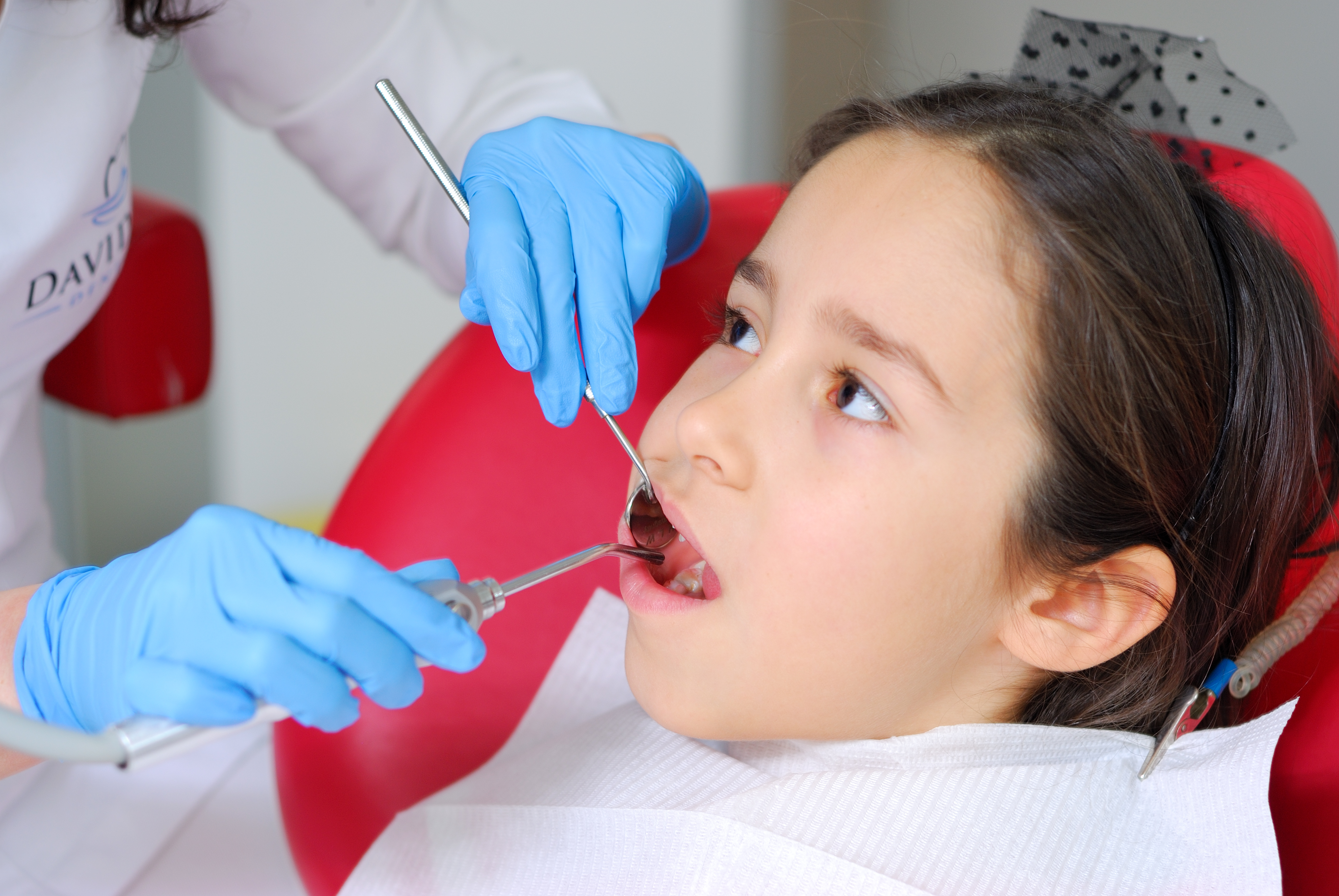Treatment of caries

Caries is one of the most common health problems in the world and affects children, teenagers and adults. It is associated with the destruction of the outer surface of the tooth - the enamel and / or the underlying dentine. Caries formation is a prolonged process that can be stopped at early stages of its development. Then the process is reversible and has the potential to restore the tooth surface and prevent further development.
How do caries form?
- Caries is formed when food and beverages containing carbohydrates such as cereals, fruits, sweets or candies, soda, juice, etc. stay for a long time on the teeth. Then the organisms from the dental plaque (the biofilm that accumulates on the dental surfaces) degrade carbohydrates by turning them into acids. They attack the tooth enamel and extract the minerals from it. This is the process of demineralization.
- Saliva is an important natural protection against caries. It neutralizes the acids causing demineralization and at the same time provides a "reservoir" of minerals that restore the structure of the enamel. This is the process of remineralization.
- Our teeth go through the processes of mineral loss and its regeneration throughout the day. When the balance is disturbed, demineralization occurs more frequently and exceeds remineralization, there are areas with mineral loss in the enamel and this is the beginning of the caries. At this stage the caries can be stopped and the tooth structure restored. Without using a machine. Only by improving hygiene and eating habits, stimulating salivation and using re-mineralizing products.
However, if the process of demineralization continues, it reaches the next layer of tooth - dentin, which is less mineralized and less resistant than enamel. A cavity is formed and the only way to restore the tooth is to put obturation (filling).
Symptoms of a caries
- Often the beginning of caries is without any symptoms. That's why regular prophylactic examinations and professional oral hygiene by a dentist are so important. Thus, the caries can be diagnosed and treated early before becoming large enough to cause symptoms.
- Early signs of caries are associated with a change in the color and glow of the enamel’s surface. With the progress of dental tissues decay, sensitivity to sweet, warm or cold, chewing pain, spontaneous pain, tooth color changes may occur. If a large part of the tooth is affected by caries, it can be fractured.
- Bad breath and taste in the mouth may be due to caries.
How is caries treated?
The treatment of caries depends on how advanced it is and the particular clinical situation. Treatment options for caries include:
Remineralization
- It has long been known that fluorine helps to restore tooth enamel and makes teeth more resistant. The professional topical application of fluorine, done by a dentist does not hide any risks. It takes only a few minutes, as the products, containing fluorine (gels, liquids and varnishes) are applied on teeth.
- In Davidova Dental, we also recommend the use of products containing medicinal hydroxylapatite, which is an essential component of natural tooth enamel. Some of them are available in the form of toothpastes and mouthwashes, and we use them for professional application in our practice.
- Due to the personal approach to the particular clinical case and using the methods of remineralization, in Davidova Dental, we are able to reliably detect the risk factors leading to the appearance of caries as well as caries in a very initial phase.
Obturations (fillings)
In our practice we restore the correct shape, function and aesthetics of teeth using the latest generation of photopolymeric and ceramic fillings that are standard in modern dentistry.
- Their color can match the color of the existing teeth and restore their natural shape and color.
- Have a strong bond with the dental tissue.
- Less tooth structure should be removed compared to amalgam.
- Resistant and long lasting.
- Prevents teeth from further rupture
Root-canal treatment
The development of caries in depth continues the destruction of hard tooth structures and the process reaches the most inner part of the tooth - the pulp. Microorganisms and their toxins damage it and this requires root-canal treatment.
Dental implant, bridge or prosthesis
The untreated caries eventually destroys the entire tooth and may result in extraction. Missing tooth is replaced with a dental implant, bridge or prosthesis.
